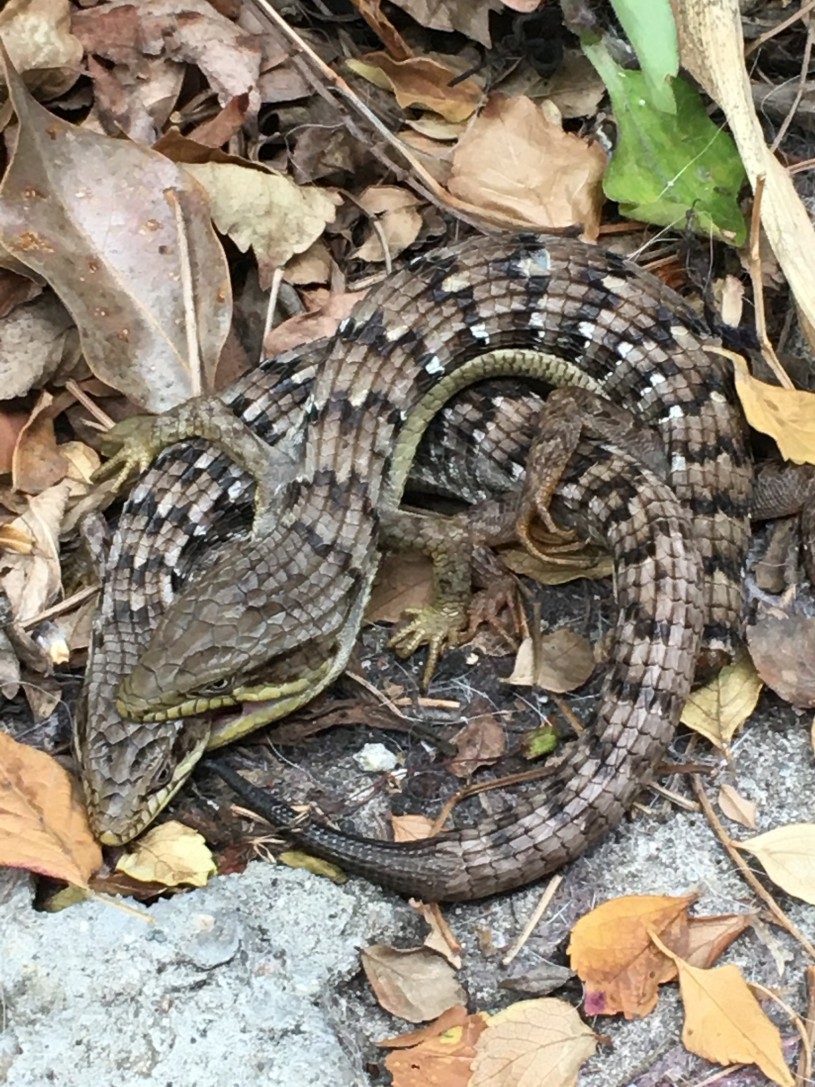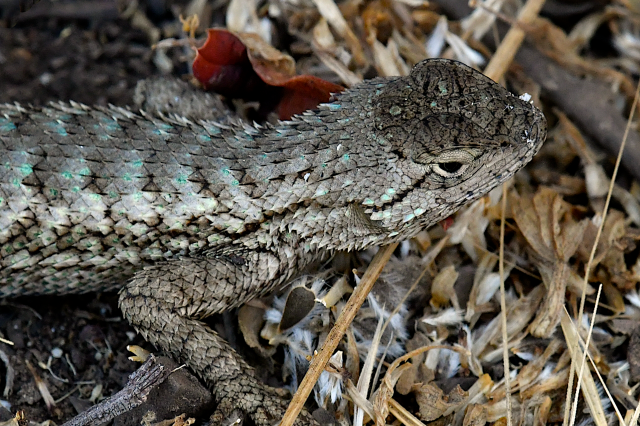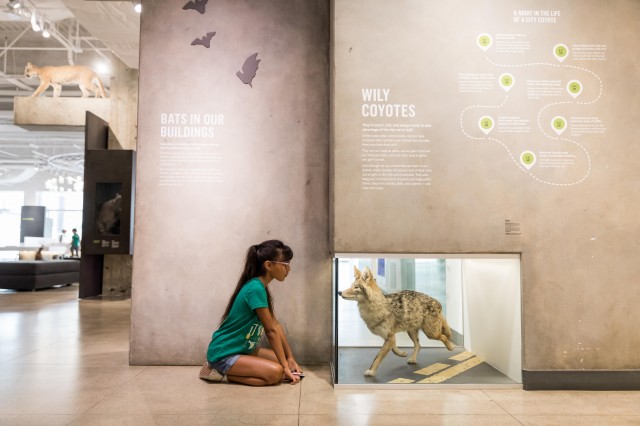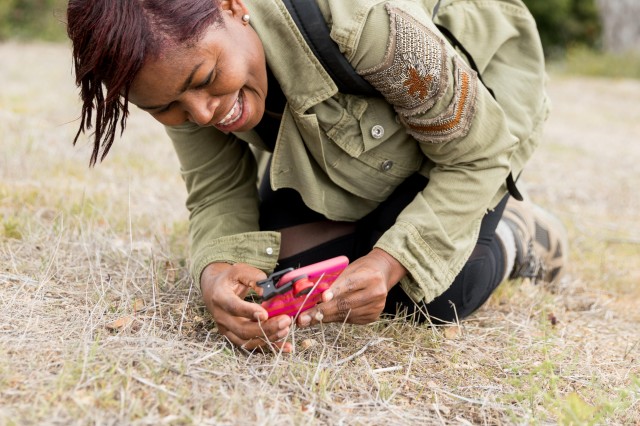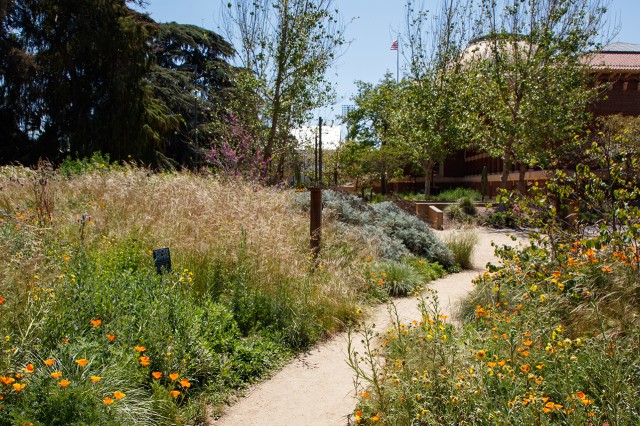
Look Out for Amorous Alligator Lizards
Spring is mating season for alligator lizards. From Baja California to British Columbia, we need your help to study their mating behavior in our 10th and FINAL year of this long-term project.
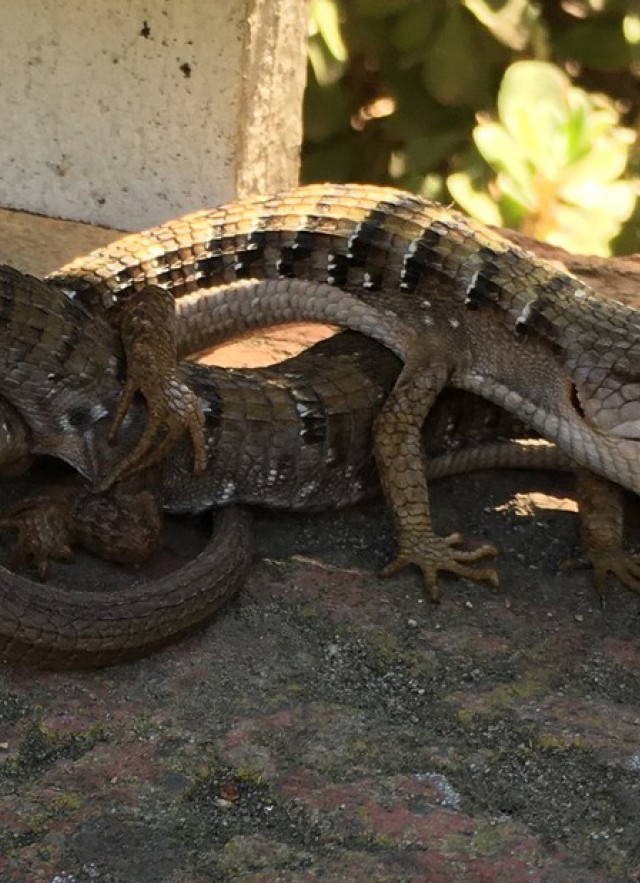
Updated March 29, 2024
Published April 16, 2021
Above Image: A pair of mating southern alligator lizards observed by Jacob, Oscar (age 5), and Mae (age 4) https://www.inaturalist.
SOUTHERN ALLIGATOR LIZARDS CAN BE FOUND FROM NORTHERN BAJA CALIFORNIA TO SOUTHERN WASHINGTON, AND THEIR CLOSE RELATIVE, THE NORTHERN ALLIGATOR LIZARD, CAN BE FOUND FROM CENTRAL CALIFORNIA TO SOUTHERN BRITISH COLUMBIA. IN URBAN AREAS, INCLUDING THE GREATER LOS ANGELES AREA, THEY ARE THE MOST WIDESPREAD LIZARDS.
Within the ranges of these two alligator lizard species are a handful of major museums, hundreds of universities, and thousands of biologists, so you might think we must know everything there is to know about these relatively common lizards. Unfortunately, like most other species on this planet, we still have a huge amount to learn about the basic natural history of alligator lizards.
In 2015, we realized that we could use crowdsourcing as a way to study mating behavior. At that time, in the entirety of the scientific literature, there were only four dates reported for when southern alligator lizards had been observed breeding. We knew we could get more observations through community science, by crowdsourcing the study of this rarely documented behavior. We started asking people to send us photos and videos of mating pairs. We have now accumulated over 835 observations of mating southern alligator lizards, and over 160 observations of mating northern alligator lizards. We are pretty sure that through community science, we have generated the largest dataset ever on lizard mating. This result demonstrates the incredible value of community science for studying rarely observed natural history events.
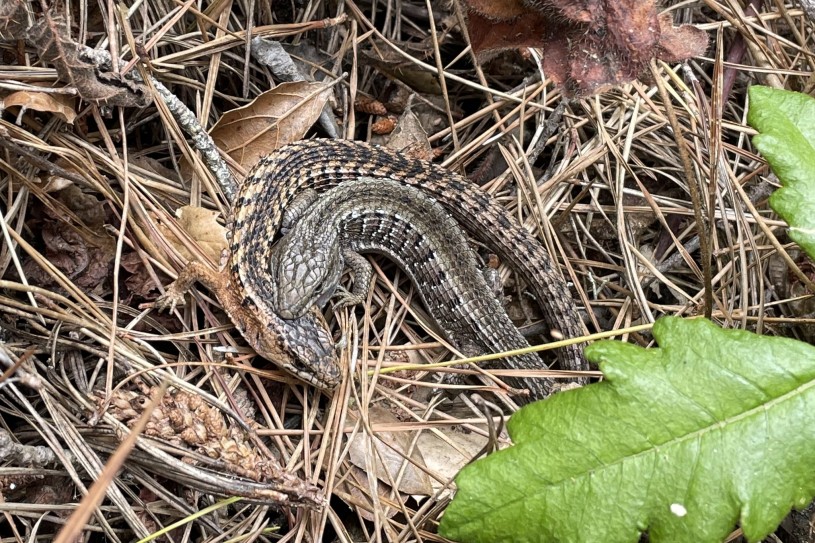
WHAT HAVE WE LEARNED WITH ALL THESE OBSERVATIONS? HERE ARE THREE DISCOVERIES SO FAR.
1. Wet years are the big breeding years.
The 2015, 2016, and 2018 mating seasons followed below-average rain seasons, and we recorded 30–40 observations of southern alligator lizards in the mating position (i.e., the bite hold, shown in the above images). In contrast, the 2017, 2019, 2020, and 2023 mating seasons followed wet winters, and we recorded nearly three times as many observations! In the 2019–2020 and 2021–2022 rain seasons, Southern California experienced very high rainfall in December and then very little rain in January and February, but we still received a large number of observations. This suggests that the lizards are responding not just to rainfall, but to early-season rainfall. Good December rains yield springs with lots of lizard mating activity.
2. Weather has a big impact on mating activity.
Cooler and wetter weather can shut down mating activity until conditions improve. For example, in 2015, most of the mating activity in Los Angeles, Orange, and San Diego Counties took place between March 11 and April 17, but we received no reports for two week-long periods during which large storms swept through the region.
3. Lizards can stay paired up for over two days!
The actual act of mating likely takes place shortly after the lizards pair up. However, the male maintains the bite hold for a long time. This is most likely a type of “mate guarding”, in which the male is trying to make sure that no rival males try to mate with the female. Pairs in prolonged bite holds can also mate multiple times. But how long might a male maintain the bite hold? We now have eight reports of pairs together over 48 hours. The current record is (sort of) shared by two pairs that were each observed together for 54 hours! One pair was observed together for 54 hours in an Orange County, CA backyard in March 2021, and the other pair was observed together for 54 hours and 1 minute on a San Diego County front porch in April 2023!
WHY IS 2024 THE FINAL YEAR OF THIS STUDY?
There are two major reasons that the study ends after the 2024 season. 1) The scientific reason. At the end of year 9, we had 4 years of drought, two years with average rainfall, and three years with above-average rainfall. Given the El Niño conditions heading into the 2023–2024 rainfall year, it seemed likely this year would be the fourth above-average rainfall year, rounding out the study to have a similar number of drought and above-average rain years. 2) The logistical reason. From mid-March to mid-May, it takes 3–5 hours per day, seven days a week for me (Greg Pauly, the lead project scientist) to communicate with community scientists and update the project dataset. After 10 years, it is time to put those hours towards analyzing data and writing up the scientific results. If you combine those two answers, we are at a point where we have learned a lot, and we need to shift from data collection towards sharing the results with the broader community of both professional scientists and the amazing community scientists who have been key to allowing this research to happen. Please check back on this website in future years to learn about project results.
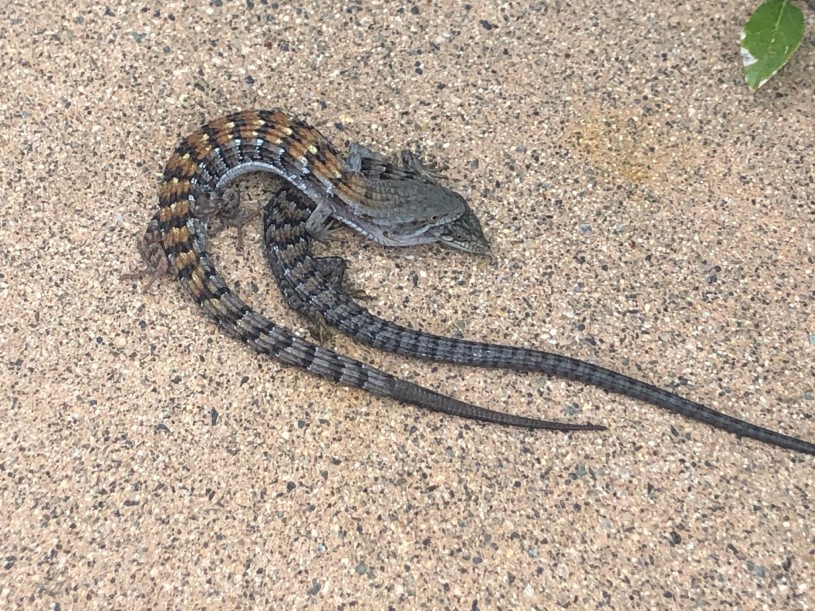
What to look for?
During mating season, males search out females. The male bites the female on her neck or head and may hold her this way for several days. Early in the encounter, the two may engage in a bit of a wrestling match (if you see this, please try to get videos). Sometimes, a second male shows up and we get even more interesting observations! About 9 percent of all observations in our dataset have two males and a female.
When to look?
Because we have accumulated so many observations, we now know that the southern alligator lizard mating season can start as early as early February in the southern part of the range and continues into early June in the northern part of the range and at higher elevations. In Southern California, most of the breeding activity is between mid-March and late April. In dry years, mating activity starts earlier, but following better rain seasons, mating activity usually begins in mid to late March.
For the northern alligator lizard, we don’t see mating activity in the south-to-north and low-to-high elevation patterns that we see in the southern alligator lizard. Northern alligator lizards can be breeding on the same day in Santa Cruz, CA, and on Vancouver Island, British Columbia. Pairs are most commonly found between early April and early June.
Where to look?
Alligator lizards can be found from coastal sand dunes to high elevations in our mountains (southern alligator lizards rarely get above 8,000 ft in elevation, but with community scientist Joseph Esparza, we documented this species at 10,300 ft in the San Jacinto Mtns; northern alligator lizards can range to about 10,500 ft). Southern alligator lizards do better than any other local lizard in urban areas across their range so they are in many neighborhoods. When in the bite hold, pairs are often found out in the open, on driveways, sidewalks, lawns, and in yards. It is also possible to find pairs several feet off the ground on fences and in shrubs
How to document? Take photos!
If the pair is wrestling, or otherwise being active, please take a video as well. We are especially interested in how long pairs remain in the mating hold, so please check back every few hours and search for the pair in the general area. If you find them again, please take a photo each time you encounter them so that we can assess whether they are mating, or in the bite hold, but not mating.
If you see courting or mating alligator lizards, please take photos and ideally also a video if they are being active. Then upload these to iNaturalist if you are already an iNaturalist user or send them to us at the Natural History Museum by emailing the photos to nature@nhm.org. If you have photos from previous years, please submit those as well. We have received observations that date all the way back to 2003.
